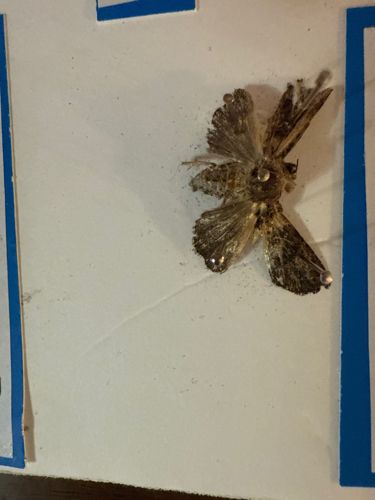Moth
Scientific Name: Unknown (Moth looks partially damaged and precise identification is difficult)
Order & Family: Lepidoptera (Moths and Butterflies), Family (difficult to determine from image)
Size: Highly variable, typically 0.5 cm to 30 cm wingspan, depending on the species.

Natural Habitat
Widely varied, depending on the specific species, but generally terrestrial environments such as forests, grasslands, gardens, and even urban areas.
Diet & Feeding
Adult moths often feed on nectar or other liquid plant secretions using a proboscis. Some adult moths do not feed at all. Larvae (caterpillars) are typically herbivorous, feeding on leaves, stems, roots, or fruits of plants.
Behavior Patterns
Mostly nocturnal, attracted to light. Females lay eggs from which larvae (caterpillars) hatch, then pupate into adult moths. Flight patterns and mating rituals vary by species.
Risks & Benefits
Potential risks include some species being pests to agriculture or stored goods (e.g., clothes moths, pantry moths). Benefits include pollination of plants, serving as a food source for other animals (birds, bats), and contributing to ecosystem biodiversity.
Identified on: 10/18/2025